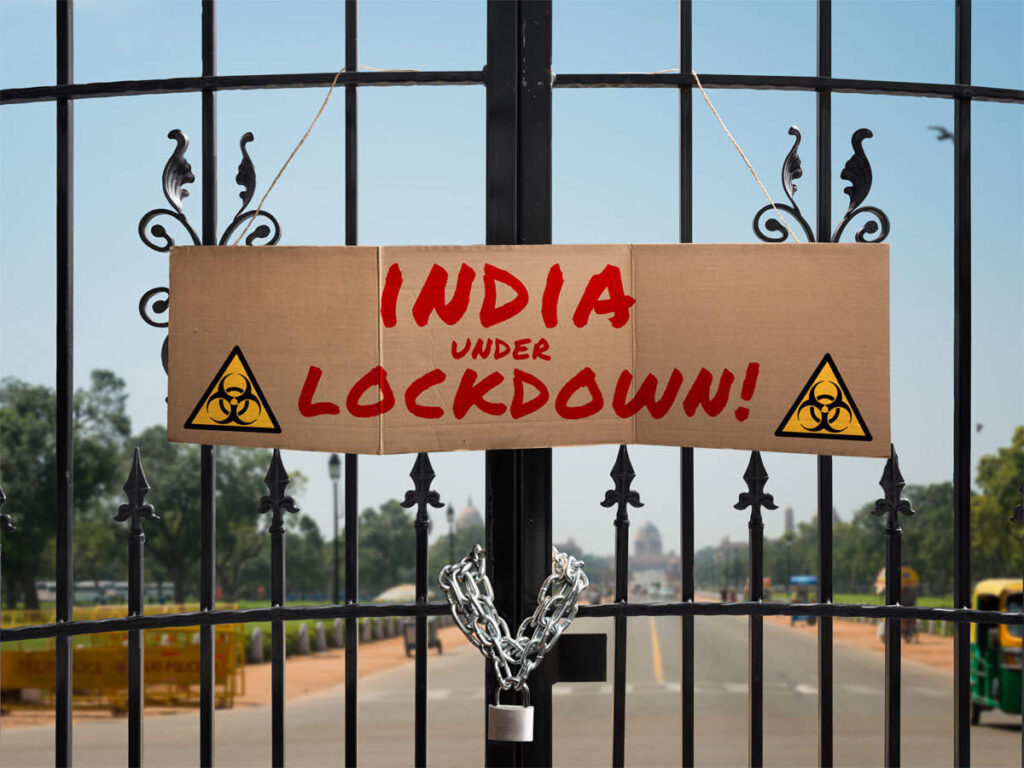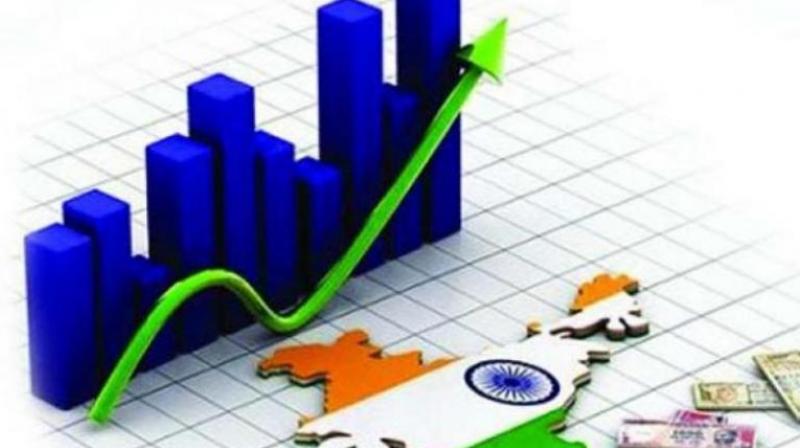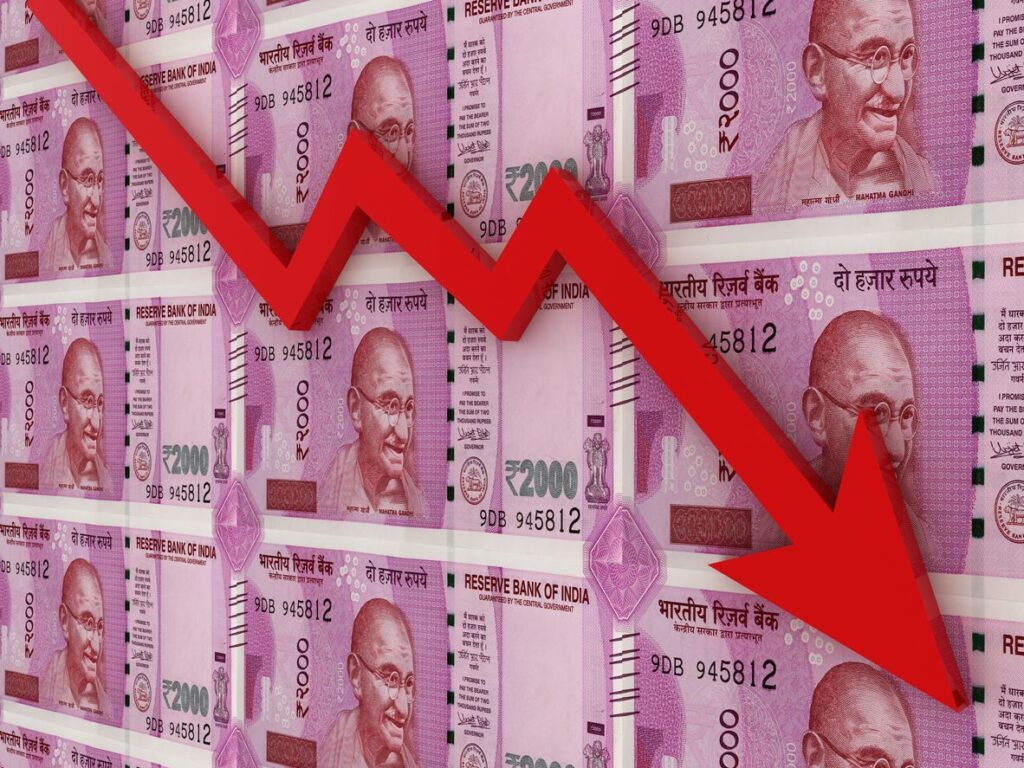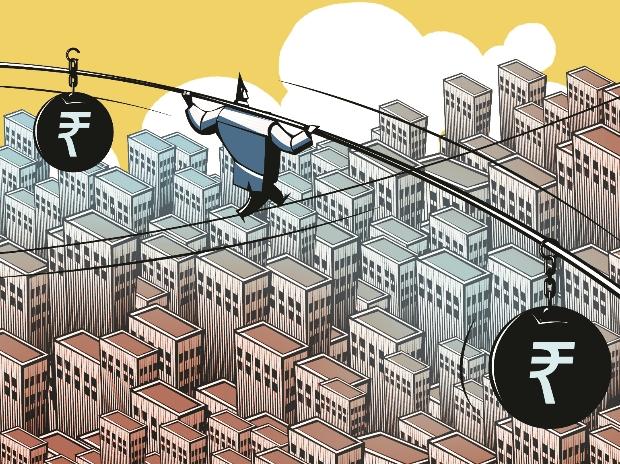Pradeep Kumar Panda
The outbreak of the COVID-19 pandemic is an unprecedented shock to almost every economy in the world. In response to the spread of the virus, many governments announced lockdowns. India announced a nationwide lockdown on March 24, 2020. This continued for close to two months and is currently continuing in some form or the other throughout the country. While rural areas opened up relatively quickly, urban India continues to see lower economic activity.

Shocks to the economy during any crisis operate at two levels: supply-side disruptions and reductions in aggregate demand. Macroeconomic policy responses to an economic crisis are typically of two types: (i) Expansionary monetary policy which includes reduction in policy rates, reserve ratios and/or expansion of money supply, and (ii) Expansionary fiscal policy which involves an increase in government expenditure and/or a reduction in taxes.
In India most of the policy response so far has been to try and ease supply constraints and allow movement and production of goods, particularly essential goods. There have also been some attempts at pushing up demand. The Reserve Bank of India has announced a slew of monetary measures (cut in repo rates, cut in CRR, freeing up liquidity in the banking sector etc) since the imposition of the lockdown.
The Union Finance Minister has announced a package (Atmanirbhar Bharat Abhiyaan package) of policy initiatives targeted at low income households and micro, small and medium enterprises which are likely to be most vulnerable in the broad-based economic slowdown. The total amount of the package has been announced to be Rs. 20 trillion (or roughly 10% of GDP).

However, a careful analysis reveals that the actual amount of fiscal stimulus offered by the government has been around 2-3% of GDP. As a result, demand for a larger fiscal stimulus has been emerging from various quarters. Several economists have argued that spending on welfare measures should be increased significantly, by 5% of GDP or more.
As an economic revival strategy, India can either try to restart the economy along with stringent safety rules and tight containment zones, and reduce the damage for firms and households so that they require less economic support, or try to implement large fiscal packages with income support, unemployment benefits, subsidies to businesses, etc. Adopting either strategy requires that we first estimate the fiscal deficit that may likely materialise primarily because of the shortfall in revenues. In this paper we work out potential scenarios of fiscal deficit to GDP ratio of the Union government for 2020-21 assuming a status quo on fiscal stimulus.
The fiscal deficit of the Union government in 2019-20 was 4.6% of the GDP, highest since 2012-13. Reduction in revenues (tax, disinvestment etc) will increase this further in 2020-21 even without any additional spending. Following the government’s decision to increase its market borrowing program by Rs 4.2 lakh crore, to tackle the Covid-19 outbreak, analysts at Bank of America estimated the Union government’s fiscal deficit to be 5.8% of the GDP in 2020-21. According to analytics firms Fitch solutions, fiscal deficit may rise to 6.2% of GDP because of weaker revenue collections and increased expenditures on account of Covid-19.6 Credit ratings agency India Ratings expects the fiscal deficit to reach 7.6% of GDP mostly due to shortfall of tax revenues.
According to the Monetary Policy Report of the RBI published in April 2020, Professional Forecasters estimated the central government gross fiscal deficit for 2020-21 to be 3.6% of GDP and the combined centre and state deficit to be 6.5% of GDP. World Bank in a report has projected the combined deficit to be 9% of GDP in 2020-21 whereas global rating agency Standard and Poor has projected the same to be 11% of GDP. Moody’s Investors Service has estimated that weaker revenue and disinvestment receipts will drive the central government fiscal deficit to 5.5% of GDP.10 Thus broadly, the forecasts for the central government fiscal deficit for 2020-21 range from 3.6% to 7.6% of GDP and our baseline forecast falls within this range.
Over the last few years, on multiple occasions the normal government expenditure has been substituted by loans in the books of various public sector enterprises to avoid fiscal slippages. This has been highlighted by the Comptroller and Auditor General of India who in its report described a few case studies where such off-budget borrowing has been steadily taking place thereby distorting the government’s fiscal math. For instance, the accumulated liabilities on account of food subsidy payments have steadily gone up from around Rs 23,000 crore in 2011-12 to more than Rs 80,000 crore in 2016-17.
Ordinarily these should have been covered by budgetary allocations. However, to cover its financial requirements the Food Corporation of India (FCI) has been issuing bonds as well as borrowing from the National Small Savings Fund (NSSF). These borrowings do not get reflected in the central government’s official fiscal deficit numbers. In 2018-19 the FCI borrowed close to 1% of GDP from off-budget sources. It is estimated that in 2020-21, the liabilities of the FCI alone may go up from Rs. 2.5 lakh crore to Rs 3.5 lakh crore. To get a sense of the overall fiscal deficit for 2020-21, one therefore needs to add such off budget items to the projected deficit numbers. We also need to add State deficit levels to the projected central government fiscal deficit. In view of the unprecedented situation due to Covid-19 outbreak, as part of its overarching Atmanirbhar Bharat Abhiyaan relief package, the central government on May 17 announced that the borrowing limit of the states would be increased from 3% to 5% of Gross State Domestic Product (GSDP). This would give States extra resources worth Rs 4.28 lakh crore. Part of this additional borrowing is linked to specific reform actions to be undertaken by the states.

The reforms are to be implemented by the states in the broad areas of universalisation of ‘One Nation One Ration card’, Ease of Doing Business, Power distribution and Urban Local Body revenues. If we assume that most states would succeed in satisfying the first two conditions, then they would be able to borrow an additional 1.5% and accordingly the state deficit would be around 4.5% GDP. Thus, the overall government deficit becomes 10.5% in our baseline scenario, without taking into account the off-budget borrowings that may take place.
Unlike the governments of the advanced economies, that have significantly stepped up spending amidst the pandemic, India has been more cautious. Amid uncertain economic growth and tax revenues this year, financing the budgeted expenditure of Rs 30 lakh crore estimated in the Union Budget, 2020-21, as well as the announced Covid-19 fiscal package, will prove to be a challenge. Borrowing beyond Rs 12 lakh crore that is on the budget (initially Rs 8 lakh crore and subsequently increased by Rs 4.2 lakh crore) and the off-budget borrowing that was already in the works will be more difficult if domestic savings decline this year.
Households are the net supplier of funds to the economy. Household savings has been falling over the last few years. The savings rate has gone down from 23.6% in 2011-12 to 18.2% in 2018-19. The year on year growth rate of household savings fell from 17.6% in 2017-18 to 5.2% in 2018-19. In 2020- 21, household savings may go down further as many households may need to dip into their savings to stabilise consumption amidst income uncertainties. The government normally borrows from households and firms through various financial intermediaries such as banks, life insurance, small savings schemes, provident funds, and the bond market. The hit to incomes may mean that people may save less. They may borrow or may dip into existing savings. The household sector consists of not only households but also household enterprises, or small firms. With lower production and sales, domestic household savings may decline. At the same time, domestic corporate savings will be used up to pay wages and salaries and maintain higher inventories in absence of a steady stream of revenue. This would result in lower corporate savings as well. This would mean less domestic savings are likely to be available for the government to borrow from. There is an argument that the decline in discretionary expenditures such as on weddings, cinemas, restaurant meals, holidays, etc. will push up total household savings.

But even if discretionary expenditures decline, the overall effect on the level of household savings will depend on how people’s jobs and incomes fare in 2020-21. Even though the lockdown in India started on March 25, 2020, Goods and Services tax (GST) revenue had already fallen sharply in the month. Collections in March 2020 were 4% less than in March 2019. Revenue from import of goods was 23% less, and the total GST revenue was 8% less than March, 2019. GST data for the first month of the fiscal year 2020-21 has been worse as April was a month of full lockdown. Collections crashed 72% in the month of April,2020.15 Budget estimates of tax revenue for 2020-21 of Rs 16.3 lakh crore were already an ambitious target over the previous year’s revised estimates of Rs 15 lakh crore. It was based on a nominal GDP growth projection of 10% made before Covid-19 hit India.
With the outbreak of the pandemic and the subsequent nationwide lockdown, nominal GDP growth and tax collections are expected to be lower. Although there has been a gradual relaxation in the lockdown from June 2020 onwards, the economy has been limping back to normalcy in June and July. There will continue be a decline in the production, trade and consumption of goods and services given the persistent supply chain bottlenecks and demand compression. This means that there will be a fall in tax collection, both direct and indirect taxes such as GST, custom duties, excise duties, personal income taxes and corporate taxes as well as in disinvestment proceeds. Given India’s inflation targeting regime, there is not much room for the Reserve Bank of India to print money to finance the budget deficit, a move that is akin to imposing an inflation tax. Hence as a last resort the government may have to borrow from abroad if domestic savings fall, with falling incomes. To be able to do this without incurring high costs, India’s public debt must be on a sustainable path. India’s macroeconomic stability will be of primary importance. Inflation has to remain low, interest rates must stay low, and growth outlook must be positive for public debt to be on a sustainable path.
Strong fundamentals will boost confidence in the rupee thereby enabling foreign borrowings. This is a period of high uncertainty. Global pools of liquidity can be highly volatile in such periods. They may go into a “risk-on, risk off” mode i.e. start moving to US bonds and exit emerging economies like India when the risk perception in international money markets is high. Any emerging economy seen as riskier is likely to see more capital flight when a shock hits global markets. We saw this in May 2013 with Ben Bernanke’s Taper Talk. High fiscal deficit results in an unsustainable rise in debt and weakens the macroeconomic fundamentals thereby triggering the possibility of a fiscal crisis morphing into a currency crisis. India’s public debt of more than 70% of GDP is significantly higher than its middle income peer countries. The ongoing pandemic and the associated economic slowdown will significantly worsen the situation. Fiscal consolidation has always been a problem in India which has had to deal with persistent fiscal imbalance. In recent times the combined fiscal deficit of central and state governments has been more than 6% of GDP. There is evidence in the literature that high and persistent fiscal deficit in India can be detrimental to economic growth. The high fiscal deficit of 2020-21 will push up the debt even further unless the government finds suitable ways to finance the deficit and growth revives soon.
The unprecedented 23.9% decline in the gross domestic product (GDP) in the first quarter of 2020–21, mainly due to the stringent lockdown enforced after the COVID-19 outbreak, is not only larger than expected but is also, most probably, an underestimate. This is because the quarterly GDP growth numbers do not capture the trends in the informal sector, which accounts for around half the GDP, and which has remained turbulent in recent years. Yet this sharp fall in growth has made India one of the worst affected COVID-19-hit economies.

Gross value added numbers show that, except for agriculture, which grew by a respectable 3.4%, all the other seven major segments of the economy have registered a contraction. The largest decline was in manufacturing, construction, and trade, hotels, transport, and communication where output fell by 39.3%, 50.3% and 47%, respectively. These three segments account for almost three-fourths of the total workers employed outside of agriculture and the sharp fall in output would have wiped out millions of jobs.
Similarly, the expenditure-side numbers indicate a sharp fall in both consumption and investments. While private consumption, the biggest component, has declined by almost a quarter, the gross fixed capital formation or investment has almost halved. The only major consolation is that government consumption expenditure rose by a fifth and gave some traction to the economy. Another plus was that the fall in imports was twice the pace of the fall in exports, which would help buoy up the external sector.
What makes the first quarter decline particularly ominous is that the economy had already slipped into a crisis even before the pandemic struck as structural constraints have steadily slowed GDP growth in the last three years to a low of 4.2% in 2019–20. In fact, the quarterly GDP has steadily decelerated for eight consecutive quarters and brought down growth rates from a high of 8.1% in the last quarter of 2017–18 to a low of 3.1% in the fourth quarter of 2019–20. And, given the current trends, it can now be safely assumed that the GDP will shrink substantially, maybe even by double digits, in the fiscal year 2020–21.
The current decline is both much more extensive and severe. This time, the slump not only extends to the two largest sectors of the economy, but it has also affected both domestic and external demand, which will snuff out two primary drivers of growth. Similarly, the level of gross fixed capital formation and gross capital formation, which power investment, has dropped around one-fifth below their previous peaks. Given this simultaneous fall in consumption, investments, and exports, only concerted and radical interventions by the government can ensure that the growth bounces back closer to double digits.
But, the government’s response to the pandemic so far dampens any such hopes. Despite the havoc heaped by the pandemic, on both business and employment, and the millions of migrants fleeing to the safety of their villages, the government delayed any substantial relief till the third week of May. The stimulus package focused on monetary policy interventions, and fiscal support was only a little more than 1% of the GDP. The government clung on to fiscal orthodoxy even as the economy suffered one of the biggest hits ever.
So, the burden of recovery was shifted largely on to the central bank, which steadily cut rates and pumped up credit flows to productive sectors. But, as consumer inflation steadily rose to exceed the central bank’s targets, mainly due to high taxes on fuel and bottlenecks in food supply, the Reserve Bank of India was soon forced to pause the rate cuts. Similarly, efforts to ensure adequate funds to boost production have also been partially stymied by the slack demand for credit from business and also by the bank’s fears of a rise in non-performing assets in the coming years.
The pandemic has also exposed many lacunae in the economy, especially in the health and social security network. The recent Universal Health Coverage Index puts India’s score at 47 as compared to Japan with the highest score of 96. Similarly, very few informal workers in the economy, who account for around 92.4% of the total workforce, have any social security benefits like paid leave or other non-wage benefits that will help them tide over a crisis.
These problems must be tackled upfront by rolling out programmes to scale up medical coverage across the country to ensure better protection from future pandemics and by building an efficient social security network to protect all workers from economic instabilities. Similarly, a massive programme to build economic and social infrastructure will pump prime demand and remove supply constraints in the medium term. Surely, it is now up to the central government to launch a massive fiscal stimulus package to stem the fall and ensure a quick recovery.

Clearly, the government’s efforts to provide relief and revive the economy have now reached a dead end, and the only way to kick-start a steady recovery is to implement a more substantial fiscal stimulus package. As a first step, the centre should immediately transfer the money demanded by the states as goods and services tax compensation to boost countercyclical spending in the regions and to also help states effectively tackle the health crisis and ensure an early recovery from the still surging pandemic.
(The author is an economist based in New Delhi. Views are personal.)



























